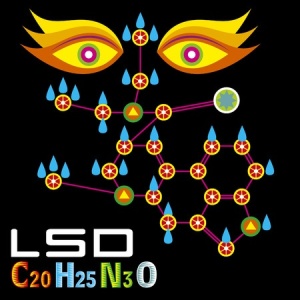Psychedelics as the Newest Psychiatric Craze, Part 2

On December 12, 2023 the MAPS Public Benefit Corporation announced it submitted a new drug application (NDA) to the FDA for MDMA-assisted therapy. MAPS PBC (now called Lykos Therapeutics) requested the FDA grant a priority review, given that MDMA received a Breakthrough Therapy designation in 2017. The FDA has 60 days to determine whether the NDA will be accepted for review and whether it will be a priority or standard review (six months or ten months, respectively). If approved by the FDA, the DEA will be required to reschedule MDMA making it available by prescription for medical use. The CEO of MAPS PBC said, “If approved, MDMA-assisted therapy would be the first psychedelic-assisted therapy, which we hope will drive additional investment into new research in mental health.”
Not everyone thinks FDA approval MDMA-assisted therapy is a good idea. The psychiatrist Allen Frances said the benefits in the active group were not much greater than the benefits in the placebo group. The cost of treatment would put it out of the reach of many potential patients, adding huge costs while providing only a small, benefit. Eric Turner, a former reviewer of psych drugs for the FDA, said he doubted the touted difference between MDMA and placebo groups was as big as it seems because the trials weren’t truly blinded. He didn’t think the MDMA trials met the FDA’s usual criteria for a well-controlled study.
The double-blind methodology in the Phase 3 Clinical trials was clearly ineffective and the dramatic results reported should be tempered with this in mind. The miniscule population size of participants for both trials also raised serious questions about an FDA approval. Phase 3 clinical trials are recommended to contain 300 to 3,000 participants by the FDA; the MAPS trials had 79 and 104 participants.
In Never Enough, Dr. Judith Grisel voiced her reservations with MDMA as a recreational or therapeutic drug. Grisel has a unique position as a neuroscientist and person in long-term addiction recovery. She said MDMA (ecstasy) is both a stimulant and a hallucinogen. Structurally, it fits better with the stimulants. “Amphetamine, methamphetamine and MDMA all acutely interact with monoamine transporters to block reuptake and cause release of dopamine, norepinephrine, and serotonin from nerve terminals.”
Ecstasy is not at all similar to LSD or psilocybin, though, and like that of other stimulants its ability to block reuptake of monoamines is what leads to enhanced energy, endurance, sociability, and sexual arousal, justifying its reputation as a perfect party drug.
It reaches peak concentration in the blood after two hours and has a half-life of about eight hours. Within an hour of taking MDMA, there is a huge increase in serotonin and other monoamines, followed by a reduction that develops over days as the drug is slowly metabolized. “As a result, people frequently experience aftereffects such as lethargy, depression, and memory or concentration problems” for a few days. Grisel acknowledged the acute effects make the short-term dip well worth it for some.
The drug greatly enhances a sense of wellbeing and produces extroversion and feelings of happiness and closeness to others, due in part to the fact that it impairs recognition of negative emotions, including sadness, anger, and fear. Affective neuroscience (the study of the brain’s role in moods and feelings) has demonstrated quite clearly that we can’t feel what we can’t recognize, so this pro-social bias seems perfectly engineered and helps explain why ecstasy is called the love drug and has been adopted for use by marriage counselors. In terms of unpleasant acute effects, the drug can cause overheating, teeth grinding, muscle stiffness, lack of appetite, and restless legs.
Grisel thought regular users were headed for a lifetime of depression and anxiety. Research in rats and primates suggests moderate to high doses of MDMA damages nerve terminals, perhaps permanently. “For example, primates given ecstasy twice a day for four days (eight total doses) show reductions in the number of serotonergic neurons seven years later.”
It seems MDMA causes non-repairable damage, especially to serotonergic neurons, leading to degeneration of axons and loss of connection between cells. These neurotoxic effects suggest that this drug is anything but innocuous. Though we’re not exactly sure how regular or semi-regular recreational use affects the human brain, because these studies would require autopsies (and control groups!), in my view it doesn’t look good. For instance, the extent of MDMA use in humans is positively correlated with the decrease in serotonergic function.
Grisel thought a study by Taurah, Chandler and Sanders published in Psychopharmacology should be read by everyone thinking of using the drug. The aim of their study was to see whether MDMA produced lasting effects on humans, as it did in animals. The loss of serotonin and norepinephrine function would be predicted to produce depression, impulsivity, and cognitive impairment “because serotonin transmission is so critically involved in mood, behavioral regulation, and thinking.” Their study included almost a thousand participants, about 20% who were drug naïve. The rest were equally divided among five groups of recreational drug users.
The researchers assessed a variety of measures including several associated with mood and cognition. There were two major findings. First, former and current ecstasy users were virtually identical, and second, these groups showed significantly more clinically relevant levels of depression, impulsiveness, poor sleep, and memory impairment. Again, these were recreational users, many had not had taken the drug for years, and still deficits were strikingly evident.
Grisel then related how her interactions with MDMA users matched the findings of Taurah, Chandler and Sanders. She described an encounter with a former undergraduate student, eager to gain research experience, who worked in her laboratory one summer. While he became less reliable as the weeks went on, she said he made up for it “by offering clever and insightful ideas about experimental design and interpretation, and when he was on, he was really very good.” She learned he worked as a DJ for local raves and told her that MDMA helped him “stay in the groove for the many hours of partying.”
The next summer he again applied to do research with her. While she wasn’t thrilled with the prospect, she remembered how undergraduate research experiences were significant in her own transition from a drug user to a drug researcher. “It didn’t go well. He was all over the place with his ideas, mads as many mistakes the first week as most newbies make in a semester, and couldn’t remember what we’d discussed from hour to hour, let alone day to day.” Grisel had to let him go, and when talking about the probable cause of his dramatic slip, he said it might be because he’d done “too much molly.”
I bumped into him a few years later while I was attending a scientific meeting in the same town which he worked as a bartender. More recently, I learned that a persistent state of chronic despair drove him to suicide.”
MAPS PBC changed its name to Lykos Therapeutics on January 5, 2024. This led to the FDA accepting Lykos Therapeutics’ New Drug Application (NDA) for MDMA-assisted therapy for PTSD on February 9, 2024. The FDA granted the application priority review and set a target action date of August 11, 2024 to make the review determination.
MAPS has been persistently and progressively chipping away at getting MDMA-assisted therapy approved to treat PTSD for many years. Let’s be careful to not release a so-called “treatment” that makes things worse for troubled people. For more on the concerns with FDA approval of MDMA-assisted therapy, see “Don’t Roll the Dice with MDMA.” For more information on concerns and reservations with psychedelics as the newest psychiatric craze, see Part 1 of this article.


